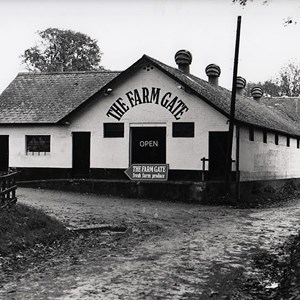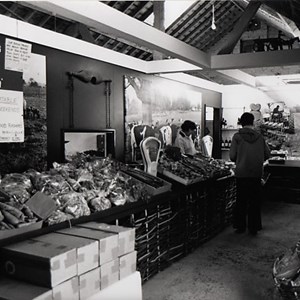Village Hall History
The building has an interesting history, it is approximately 150 years old and was once part of the Warnford Estate. It was constructed as a cow byre using traditional techniques though in the mid 1930’s the larger end of the building was converted with considerable building work to a laboratory for research work relating to the pig farming industry. At the time the Warnford Estate was one of the largest pig farms in the country. The smaller end of the building was used for agricultural storage.
In 1973 after the laboratory had been redundant for nearly fifteen years the building was converted into a farm shop. Called ‘The Farm Gate’ the shop ran successfully until 1985 when it was forced to close due to commercial pressures. By this time the building was well serviced including electric storage heaters, hot and cold water and excellent lighting.
In 1987 the estate was approached by an ex-school teacher who wished to use the building as an ecology study centre. For this use relatively little conversion work was needed though Winchester City Council required that toilet provision be made within the building. This excellent use of the building and surrounding yard was made possible by cash aid from the countryside commission and the tourist board. The study centre was used by schools and colleges to supplement biology, geography, geology, and history GCSE courses. Evening and weekend courses were also held as well as family days. During the school holidays environmental activity weeks took place for children. The study centre was open to all and operated up until 1991 when education funding cuts meant that schools and colleges could no longer afford to use the facilities. Without this income the centre was no longer viable and was forced to close down.
The Farm Gate then stood redundant for several years and in the meantime the Warnford Estate changed ownership from the Chester family trading as Warnford Farms to the Sellick family trading as Gawthorpe Estates Ltd in 1995.
With the demise of the farm yard area that surrounded the building it was decided by Gawthorpe Estates Ltd to redevelop this part of the village and create more homes. As this redevelopment scheme required the demolition of the existing village hall, adjacent to the farm yard and old estate offices, it was proposed to convert The Farm Gate into a replacement village hall as part of the house building project. This plan was accepted by Winchester City Council and the developers took on the responsibility to convert the Farm Gate into the current village hall we have today.
In 1997 the village hall was gifted by the Sellick family in trust for the village.



